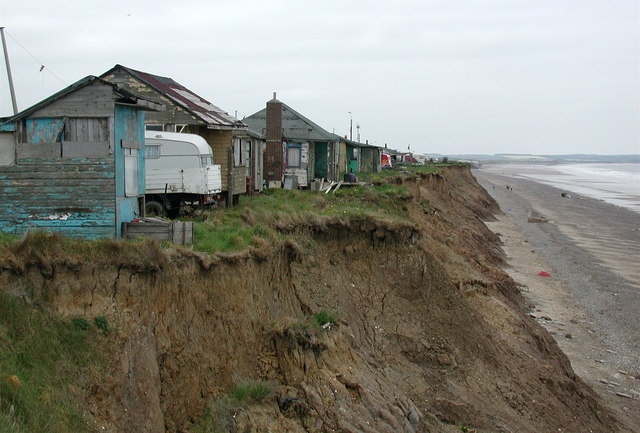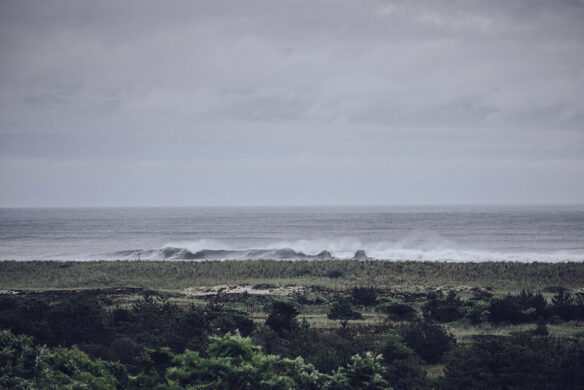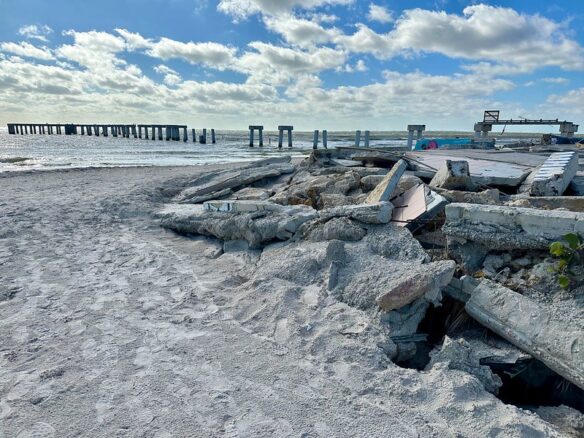Excerpt:
Homeowners along the eastern coast of England are watching the North Sea swallow their communities. Help is on the way — but only for some.
On a stormy day in the spring of 2021, the sea defenses on the beach below Lucy Ansbro’s cliff-top home in Thorpeness, England, washed away. Then, the end of her garden collapsed into the North Sea.
As she watched the plants tumble over the edge, she feared that her house in this coastal village 110 miles northeast of London would be next.
“We lost three and a half meters of land,” said Ms. Ansbro, a 54-year-old television producer, sitting in her kitchen on a recent morning. “Every time I went out, I didn’t know if the house would still be here when I came back.”
Coastal erosion is a natural process as waves pound beaches around the globe, but along this stretch of England’s eastern coastline, stronger storms and bigger waves are striking fear in local residents like never before.
Thousands of homes here are threatened by the sea, and the government agencies tasked with defending them are straining to keep pace. The Committee on Climate Change, an independent body that advises Britain’s Environment Agency, has reported that 8,900 residential properties — 1,200 of which stand on stretches of coastline with no protective structures — are at risk from coastal erosion. Without active shoreline management, around 82,000 homes could be lost by 2105.
To stem the tide, the Environment Agency has pledged 5.2 billion British pounds (around $6.5 billion) to build and realign 2,000 defense structures — including sea walls made from rocks or cement and steel — that could protect communities from erosion and flooding, though not forever.
But in some high-risk coastal communities, homes are being left to the mercy of nature. Distraught homeowners in these areas are facing the prospect of eviction and, worse, of demolishing their own homes.
Ms. Ansbro’s house, which she bought in 2010 for about £590,000, now stands 35 feet from the cliff edge. After she lost her garden, she applied for permission from the local East Suffolk Council and Environment Agency authorities to replace the gabions (metal cages filled with rocks) and the sand-filled geobags that had been lost with riprap. The requests were granted, but that didn’t necessarily mean help was on the way.
In England, the costs of building sea defenses are shared by national and local offices. On the national level, a funding calculator assesses how much of that £5.2 billion budget is potentially available. It depends on whether the “benefits are greater than the costs,” based on a timeline of erosion and four location-specific policy tiers: Advance the Line, where new defenses extend the land area out to sea; Hold the Line, where new defenses maintain the existing shoreline; Managed Realignment, in which the shoreline is allowed to erode but money is spent “to direct it in certain areas”; and No Active Intervention, where no national funds are invested.
On a local level, councils and landowners are left to make up the difference.
“In layperson’s terms, the policies are referred to as defend, retreat or abandon,” said Angela Terry, CEO of One Home, a group advocating on behalf of homeowners at risk…









